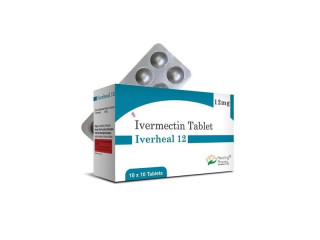"Advancements in Laparoscopic Myomectomy: Minimally Invasive Solutions for Uterine Fibroids"
Feb 14th, 2024 at 11:52 Beauty & Well being Panchkula 25 views Reference: 53511Location: Panchkula
Price: Contact us
Uterine fibroids are noncancerous growths that develop in or on the muscular walls of the uterus. Also known as myomas or leiomyomas, fibroids are very common, affecting about 70-80% of women by age 50. While many fibroids don't cause symptoms, some can result in heavy menstrual bleeding, pelvic pain and pressure, frequent urination, and reproductive problems. Laparoscopic myomectomy is one of the minimally invasive treatment options available today for uterine fibroids. Paras Hospital Panchkula is one of the leading providers of laparoscopic myomectomy in India.
Laparoscopic myomectomy is a procedure where small incisions are made in the abdomen to remove fibroids from the uterus using laparoscopic surgical techniques. It allows surgeons to locate and remove fibroids through tiny incisions with the aid of a camera, while viewing the uterine structures on a monitor. This results in smaller external scars, reduced blood loss, shorter hospital stay, and faster recovery compared to open surgery.
There have been several important advancements in laparoscopic myomectomy over the past decade or so. One significant development is the use of power morcellation devices. These allow surgeons to cut large fibroids into smaller fragments that can be removed through the small laparoscopic incisions. However, there have been some concerns over the potential for morcellation to inadvertently spread undetected cancerous tissue. This has led to restrictions on power morcellation, driving further innovations in contained morcellation and non-morcellation techniques.
Another impactful advancement is suturing technology like barbed sutures and knotless sutures. These allow surgeons to close the uterine incisions from fibroid removal with greater efficiency and security. Pre-tied, self-retaining sutures like the V-Loc 90 absorbable wound closure device have also helped make laparoscopic suturing easier and faster while reducing bleeding and complication risks.
Improved distension media is enabling better visualization during laparoscopic myomectomy. Normal saline doesn’t provide adequate uterine expansion. Glycine and sorbitol-mannitol solutions are better options but can be absorbed into the bloodstream and cause complications. Newer distension media like hydroxyethyl starch have been shown to reduce fluid absorption issues.
Devices like uterine manipulators now allow surgeons to easily maneuver the uterus during laparoscopic myomectomy for better accessibility to fibroids. This helps reduce operating time and risk of complications. Integrating uterine manipulators with morcellators and suction systems further enhances ergonomics and workflow.
Advanced imaging techniques are also transforming laparoscopic myomectomy. Preoperative MRI provides detailed mapping of all uterine fibroids, enabling better planning and precision during surgery. Intraoperative ultrasound is being used to visually track fibroids and surrounding structures in real time. Fluorescence imaging is also being investigated to enhance tumor visualization.
The converging benefits of robotic assistance and computer enhancement are taking laparoscopic myomectomy to new levels of safety, precision, and effectiveness. The dexterity and high definition 3D vision provided by surgical robots like the da Vinci system allow for meticulous dissection and reconstruction of uterine anatomy. This reduces technical challenges, fatigue, and risks during complex laparoscopic procedures.
Despite the rising popularity of minimally invasive fibroid treatments like uterine artery embolization, laparoscopic myomectomy remains an important option for women wanting to preserve fertility and avoid hysterectomy. That’s because laparoscopic myomectomy removes fibroids while keeping the uterus intact. For women hoping to become pregnant, laparoscopic myomectomy is generally considered the gold standard minimally invasive treatment choice.
With advanced techniques and technologies, laparoscopic myomectomy is being performed through increasingly smaller incisions. Needlescopic approaches utilize incisions less than 3 millimeters in size. This further minimizes scarring and speeds up patient recovery. However, needlescopic myomectomy requires very advanced laparoscopic skills and specialized micro-instruments.
Single-port laparoscopy is another evolving technique where multiple instruments are passed through a single incision in the navel. The umbilical entry point virtually eliminates visible scarring while allowing surgeons to operate with similar dexterity as traditional multi-port laparoscopy. Again, the learning curve is still significant. As surgeons gain more experience with single-site access techniques, this approach may become more mainstream.
Another frontier in minimally invasive myomectomy is natural orifice surgery where incisions are made internally through natural openings like the vagina or uterus. Natural orifice transluminal endoscopic surgery (NOTES) can potentially further reduce external scarring and issues associated with abdominal incisions. However, this highly advanced approach requires special flexible instruments and is still in developmental stages.
As a leading centre of excellence in gynecological care, Panchkula offers comprehensive fibroid treatment including cutting-edge laparoscopic myomectomy performed by highly skilled specialists. The hospital is equipped with state-of-the-art infrastructure, sophisticated technologies, dedicated fibroid clinics and excellent patient support services. By delivering minimally invasive solutions through advancements like robotics, Paras Hospital is enabling uterine fibroid patients to benefit from scarless surgery with faster recovery.




